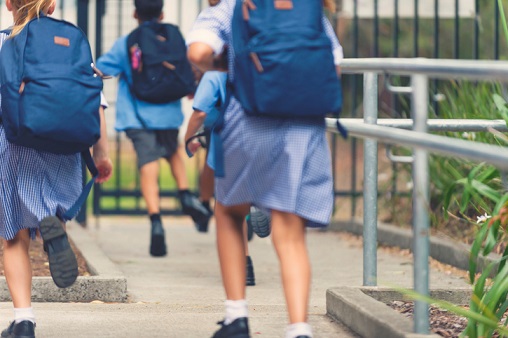
School uniform advocates argue that students pay more attention in the classroom and be better behaved if they aren’t distracted with fashion. School administrators say uniforms help eliminate gang-related styles and logos. They also make it easier to spot a stranger on campus.
However, many parents and students don’t like the idea of forcing children to dress alike, which they say suppresses freedom of expression. School uniforms can also present legal issues for schools, as pointed out in one Australian report.
A recent article published in The Conversation asked five experts from various fields whether school uniforms should be compulsory. Rather surprisingly, among the experts at least, there was little division.
Developmental psychologist Peter Wilson said a school uniform can instil or support a sense of equality among students, as well as reducing social status comparisons many children find challenging.
“Looser school-dress boundaries could add social pressure on many kids’ choice of clothing,” Wilson wrote in The Conversation.
“They may perceive others judging them on their choice, or feel it reflects their personality or status. In the extreme, clothing styles can reinforce in-groups and out-groups at school.”
On balance, says Wilson, school uniforms are good for kids.
“There is even a suggestion they can help promote better discipline which, in turn, can enhance academic performance. But whatever the choice of uniform, it should not restrict movement,” he said.
Educational psychologist Sue Roffrey said school uniform is an outward symbol of school identity and sometimes heralded as promoting a sense of belonging.
However, she noted that there is extensive literature on school belonging and school uniform never features as a way to achieve that.
“Supportive and respectful relationships, and a sense of achievement, are what determine how a student feels about their school. And teachers who penalise a student for not abiding by uniform rules risk this relationship,” Roffrey said.
“Belonging can be inclusive or exclusive. Exclusive belonging is where groups only accept those like them and often promote a sense of superiority. School uniform can give that message.”
Behaviour expert Jeffrey Thomas said some proponents of school uniforms believe they contribute to better student behaviour but the research on this is inconclusive.
“Some evidence suggests that, because uniforms create a sense of equality, they could help reduce bullying,” he said.
However, Thomas said this argument can be countered by knowledge that bullying is a product of deeper power imbalances that exist in schools with and without a mandated uniform.
“The equality, or ‘sameness’, of uniforms may actually disengage some children for whom self-expression through dress is fundamentally important,” he said.
“Research suggests the quality of teacher-student relationships is superior in schools without compulsory uniforms. And quality student-teacher relationships are considered a leading strategy for preventing disengaged student behaviour.”
Education researcher Victoria Rawlings said while uniforms may seem to obscure economic differences her research indicates young people wearing uniforms still face marginalisation due to the way they style their hair and wear makeup, or because of their bags or jewellery.
“These elements are given meanings associated with class, sexuality and culture which lend themselves to hierarchies of power and to discrimination. So it’s impossible to eliminate differences of social class just by having a uniform,” she said.
“Depending on how uniform policies are constructed and mandated, they can also be restrictive for young people who are transgender or gender diverse, or simply uncomfortable in the uniform assigned to them due to their gender.”
Rawlings said research shows skirts and dresses restrict young girls’ movements, which makes girls less active at breaktime and prevents them from sitting comfortably on the floor.
“Minority groups bear the brunt of uniform policing, demonstrating these policies privilege and punish certain kinds of students and, in doing so, contribute to a culture that privileges those already in positions of power,” she said.
Law lecturer Renae Barker noted that in the 2016 census, 9% of people under 18 years identified as being in a minority religion, such as Islam and Hinduism, adding that many uniforms fail to take this diversity into account.
“Schools are given a wide discretion to the application of uniform policies. Victoria’s Equal Opportunity Act 2010, for instance, states: ‘An educational authority may set and enforce reasonable standards of dress, appearance and behaviour for students’,” he said.
“Schools are also required to 'take into account the views of the school community' but not all do. In one case against a Christian college, a Victorian court held the school’s uniform policy, that prohibited head coverings 'related to a non-Christian faith' (the student was a Sikh), breached the anti-discrimination provisions of the Equal Opportunity Act.”
Barker pointed out that while school uniforms should not be compulsory, schools should be able to set minimum standards. These must be flexible enough to take into account the school’s religious and cultural diversity.
“A school may have set colours or uniform items and allow students from diverse backgrounds to wear religious and culturally appropriate dress in those colours with other items,” she said.


